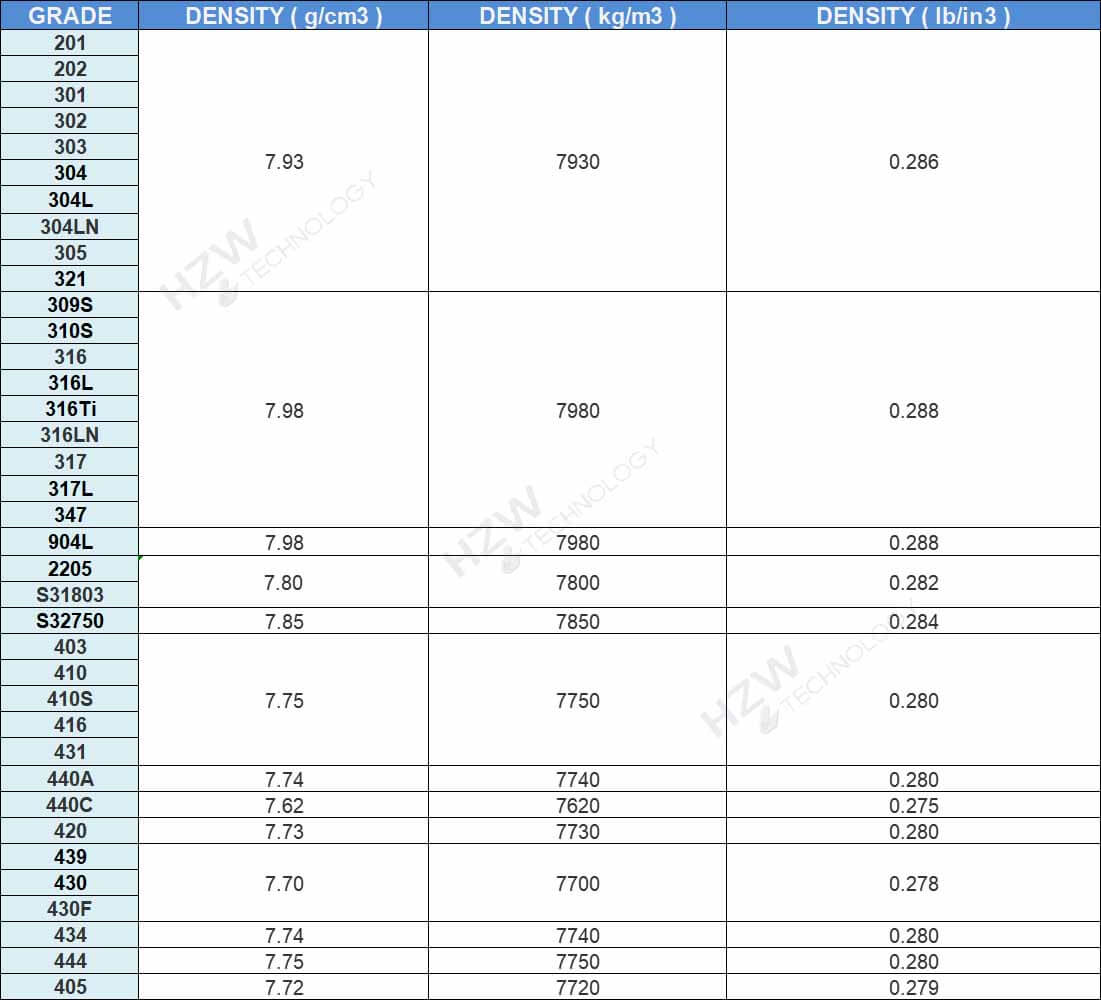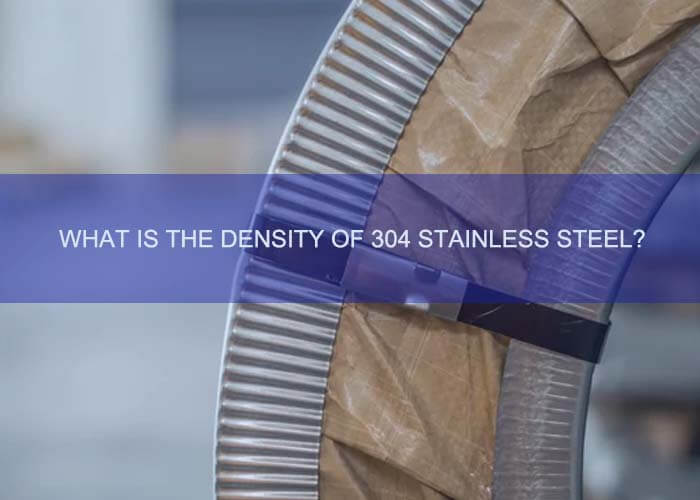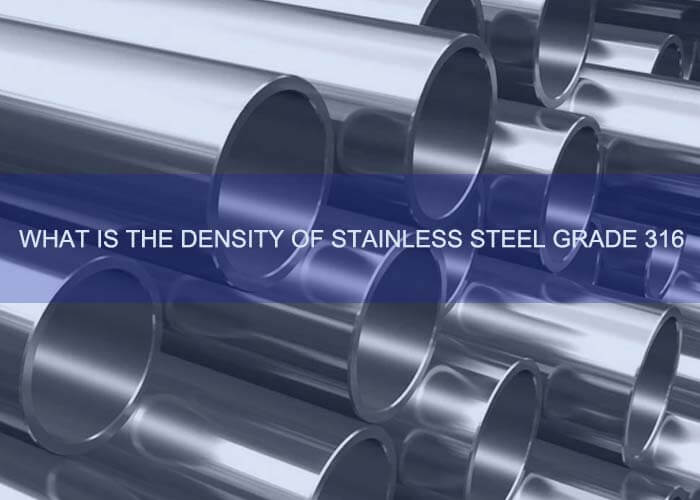Surgem dúvidas frequentes sobre a densidade do aço inoxidável, abrangendo aço inoxidável 304 e aço inoxidável 316.
Ao considerar a densidade do aço inoxidável, você chegou ao lugar apropriado.
Se você quiser saber mais sobre a densidade do aço inoxidável, este artigo é muito útil para você.
Vamos continuar lendo.
O que é densidade?
In broad terms, the term “density” pertains to the quantity of a substance contained within a specific space.
From a more scientific perspective, density is quantified as the mass per unit volume. Mathematically represented, the formula is as follows:
p = m/V
Within this equation, densidade (p) equals the mass (m) divided by the volume (V).
Density is also classified as an intensive property, indicating that the density of an object remains constant regardless of the quantity.
Regarding units of measurement, density can be expressed in kilograms per cubic meter (kg/m³), gramas por centímetro cúbico (g / cm³), grams per cubic meter (g/m³), or pounds per cubic inch (lb/in³).
What is density of stainless steel?
Stainless steel density signifies the mass of the substance within a given unit of volume.
Esta propriedade é uma característica do aço inoxidável, com sua densidade normalmente caindo entre 7.6 g/cm³ e 8.0 g / cm³.
O aço inoxidável é um material amplamente utilizado composto por um mínimo de 10.5% Cromo, junto com outros elementos que se combinam para criar sua estrutura distinta.
Esses componentes incluem carbono, Silício, Manganês, Fósforo, Enxofre, Níquel, Molibdênio, Titânio e Cobre. Este aço é reconhecido pela sua excepcional resistência e notável resistência à corrosão.
Variations in chemical compositions and their proportions determine the distinct densities of different stainless steel grades.
Among the stainless steel grades, 304 and 316L are the most commonly used materials with differing densities.
Consequentemente, the computation of stainless steel weight differs between 304 e 316 aço inoxidável.
Stainless steel density table chart:

| AVALIAR | DENSITY ( g/cm3 ) | DENSITY ( kg/m3 ) | DENSITY ( lb/pol3 ) |
| 201 | 7.93 | 7930 | 0.286 |
| 202 | |||
| 301 | |||
| 302 | |||
| 303 | |||
| 304 | |||
| 304eu | |||
| 304LN | |||
| 305 | |||
| 321 | |||
| 309S | 7.98 | 7980 | 0.288 |
| 310S | |||
| 316 | |||
| 316eu | |||
| 316Vocês | |||
| 316LN | |||
| 317 | |||
| 317eu | |||
| 347 | |||
| 904eu | 7.98 | 7980 | 0.288 |
| 2205 | 7.80 | 7800 | 0.282 |
| S31803 | |||
| S32750 | 7.85 | 7850 | 0.284 |
| 403 | 7.75 | 7750 | 0.280 |
| 410 | |||
| 410S | |||
| 416 | |||
| 431 | |||
| 440UMA | 7.74 | 7740 | 0.280 |
| 440C | 7.62 | 7620 | 0.275 |
| 420 | 7.73 | 7730 | 0.280 |
| 439 | 7.70 | 7700 | 0.278 |
| 430 | |||
| 430F | |||
| 434 | 7.74 | 7740 | 0.280 |
| 444 | 7.75 | 7750 | 0.280 |
| 405 | 7.72 | 7720 | 0.279 |
FAQs of stainless steel density
What is the density of stainless steel in kg/m3?
The average density of stainless steel is 8000 Kg/m3, which is slightly heavier than copper and aluminum alloy.
What is the density of 304 aço inoxidável?
304 stainless steel is most versatile grade of stainless steel with a density of 7.93g/cm3(7930 Kg/m3).

What is the density of 304 stainless steel in lb/in3?
Converting the metric density to Imperial units, the density of 304 stainless steel is approximately 0.289 lb/pol3. This conversion is useful for industries that operate primarily with Imperial unit systems.
What is the density of stainless steel grade 316?
316 stainless steel is also one of the most versatile grades of stainless steel materials with a density of 7.98g/cm3.

What is the density of stainless steel 316 in kg/m3?
The average density of 316 aço inoxidável é 7980 Kg/m3
Which is heavier mild steel or stainless steel?
Mild steel is heavier than stainless steel. Stainless steel density is not massive enough, but it is still have higher strength.
How is the density of stainless steel affected by pressure and temperature?
From a scientific standpoint, density is directly linked to pressure and inversely related to temperature.
Altering either the temperature or the pressure brings about changes in the densities of stainless steel.
Geralmente, as temperature rises, density diminishes, while heightened pressure consistently results in increased density.
This correlation holds significance in determining the response of stainless steel or, more broadly, aço, to specific circumstances.
Por exemplo, the selection of materials for aircraft necessitates precise densities to uphold appropriate weight and equilibrium.
The same principle holds true for assessing the creep factor in aircraft, where “creep” denotes the intrinsic tendency of a material to undergo movement or deformation due to mechanical stress or strain.
Claramente, stainless steel or any alloy must conform to these requisites.
Failing to meet these criteria would pose potential risks and lead to costly remedies for material failures.
Why do you need to know the density of stainless steel?
Investigations into the density of stainless steel offer a crucial point of reference for material design and selection.
Diverse sectors within engineering applications demand the utilization of distinct types and specifications of stainless steel materials.
Among the significant indicators for material selection and design, the density characteristics of these materials assume a paramount role.
Por exemplo, within the realm of construction engineering, the selection of stainless steel materials boasting robust strength and excellent corrosion resistance is imperative for structural components. Here, in-depth studies on stainless steel density serve as guiding principles.
que podem ajudá-lo a realizar todos os respectivos processos envolvidos na indústria, desde as matérias-primas de aço inoxidável até a produção em massa de tiras, the exploration of stainless steel density serves as a pivotal foundation for its processing and practical application.
Throughout the processing and implementation of stainless steel, careful consideration of its density attributes is vital, influencing mechanical properties, resistência à corrosão, and processing capabilities. This consideration ensures the alignment of stainless steel material properties with specified requirements.
Lastly, the scrutiny of stainless steel density provides essential backing for environmental conservation and sustainable advancement.
The study of stainless steel density aids in the progression of high-performance, low-density, cost-effective stainless steel materials, catering to the demands of environmental preservation and sustainable progress.
Conclusão
The relationship between the density of stainless steel and various interconnected factors is noteworthy. This understanding will prove valuable in selecting and applying specific grades of stainless steel appropriately.
Manufacturers and metallurgists should itemize these characteristics to ensure adherence to their specifications. While you might lack knowledge regarding the densities of stainless steel 304 e aço inoxidável 316, it’s imperative to seek a reliable stainless steel manufacturer for optimal cost-effectiveness.
Keep in mind that there’s more complexity beneath the surface when it comes to stainless steel and materials in general. Portanto, familiarizar-nos com suas propriedades distintas é crucial para maximizar sua utilidade, especially for those engaged in steel manufacturing, projeto, ou engenharia.
Em HZW, você tem acesso a qualidade premium tiras de aço inoxidável e bobinas de aço inoxidável disponível no mercado. Feel free to consult our experts for your stainless steel project needs.












